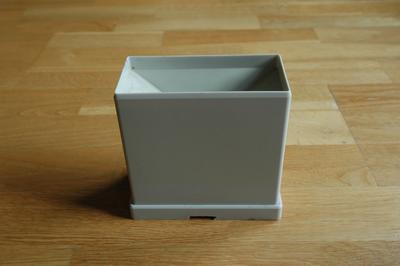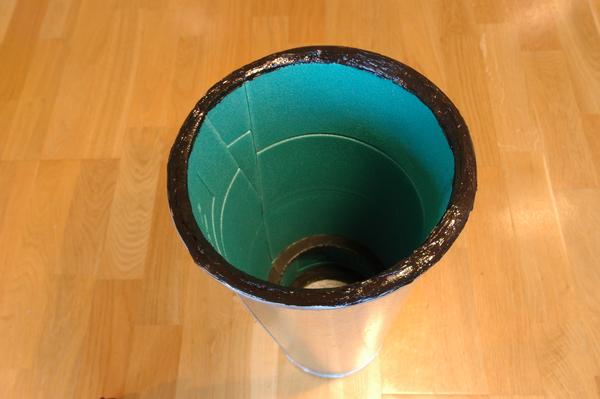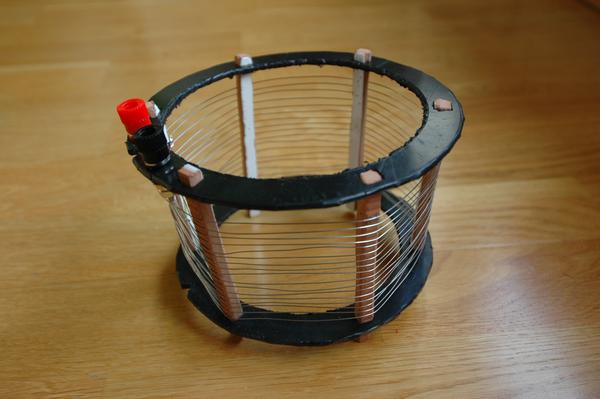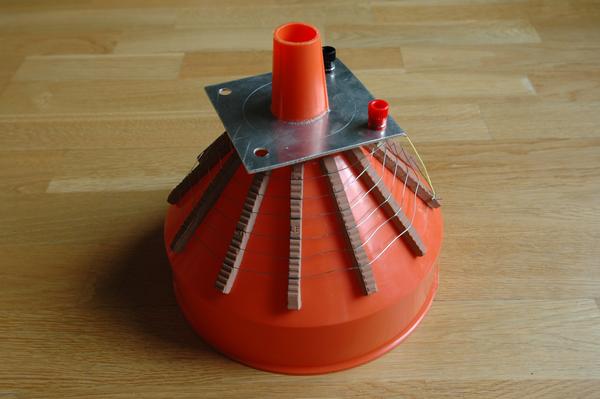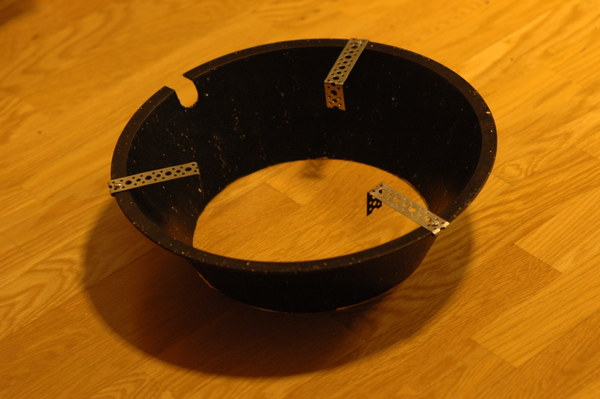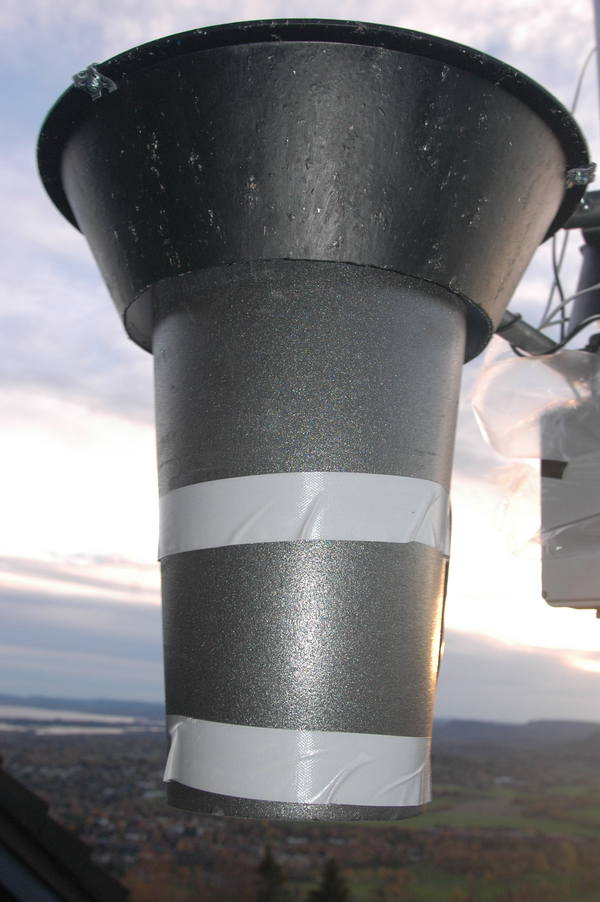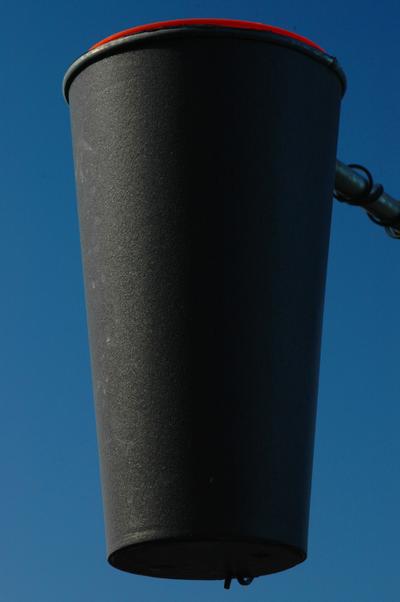
The final result.
Some problems with a La Crosse rain gauge arose after a few months' use. It was vulnerable to spiders, which consider this box a perfect nesting place, and web quickly prevents the bucket from tipping as is should. It also has a prettly small inlet, which makes it inaccurate in windy conditions. Besides, it fails to detect very light rain or drizzle. So I decided to build a new gauge. To make it work in winter as well, some kind of heating device was necessary. Experiments last winter with the La Crosse gauge had shown me that some resistance wire and insulation work reasonably well.
The following parts were used:
- One La Crosse WS-7048U rain gauge (modified for 1-wire).
- One large metal flower bucket from Ikea (upper diameter: 22cm, lower: 15cm, height 40cm).
- One petrol funnel with a 20cm diameter and with a (spider proof?) mesh.
- Two Ajungilak seat pads and about two square metres of parquet underlay.
- 10 metres of resistance wire, 6.94 ohm/m.
- A couple of ceramic tiles.
- Some silicone bathroom seal.
- Some bits of plastic and aluminium sheets.
- Connectors, wires, etc.
I cut the seat pads so they would cover all of the inside of the bucket, and glued it. The bucket now had some basic insulation, and because of the conical shape of the bucket and the soft insulation, all parts could be made to fit and be firmly spueezed into place. I pasted some silicone seal around the upper end of the bucket as water proofing (picture 1). Some holes were made in the bottom for water to escape and wires.
A heating device in the bottom of the bucket prevents water inside the La Crosse gauge from freezing. A few metres of resistance wire producing 5 - 15W of heat should suffice. I made two plastic rings, their diameters being 14 and 15.5cm, which would fit the lower 10 cm of the bucket. Between which I placed ceramic rods 60 degrees apart around which the wire could be winded, so it wouldn't touch the insulation (picture 2). I used a little more than 6 metres of wire, divided in two equally long parallel runs lowering the resistance. This yields about 7W at 9V and 13W at 12V.
